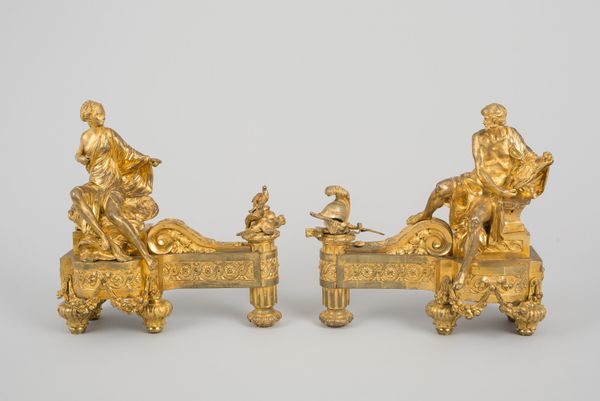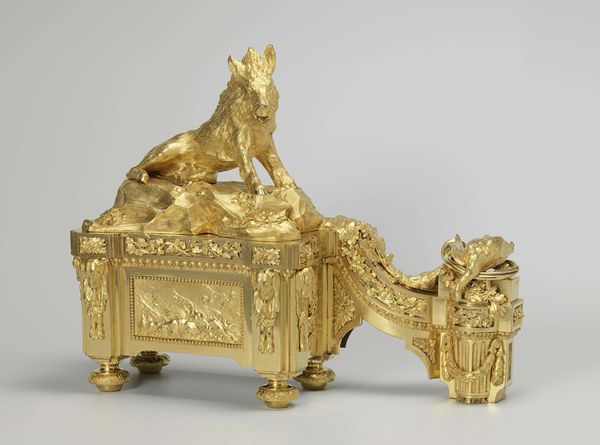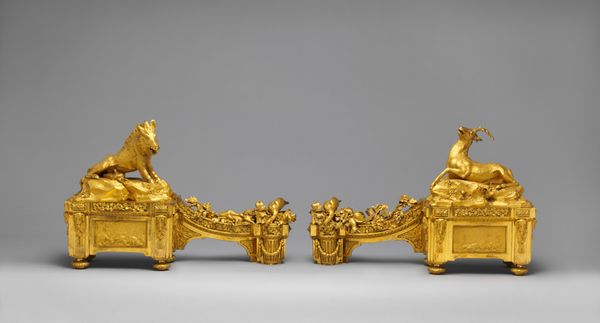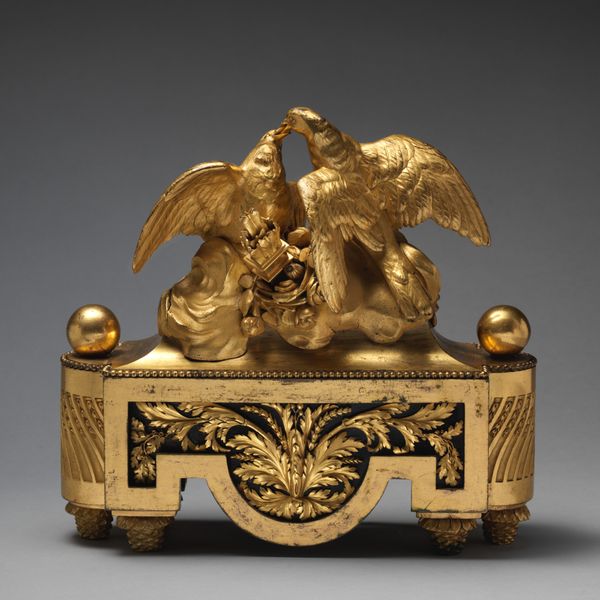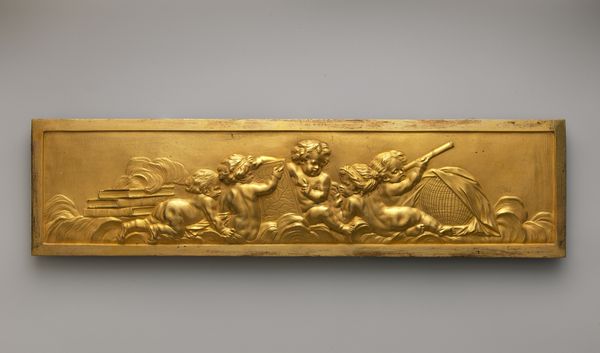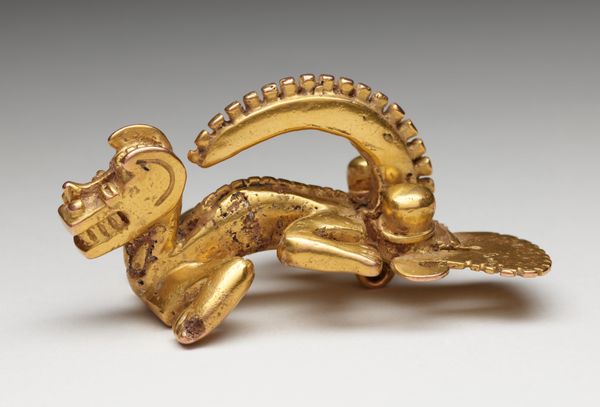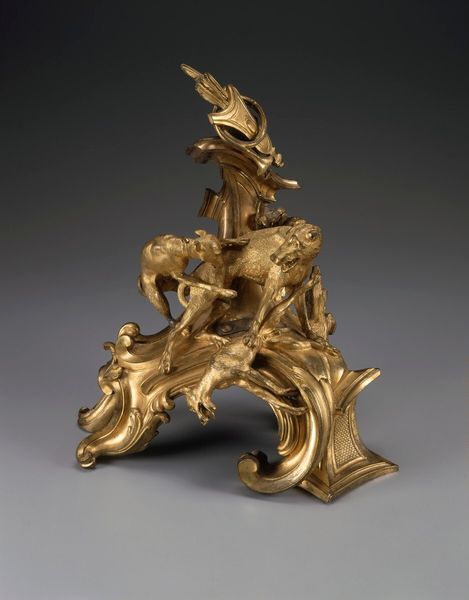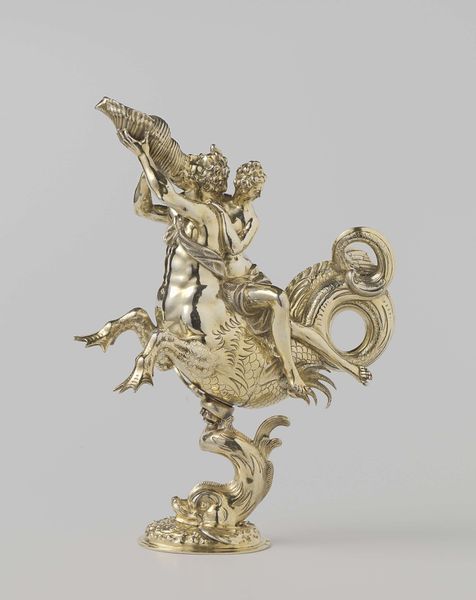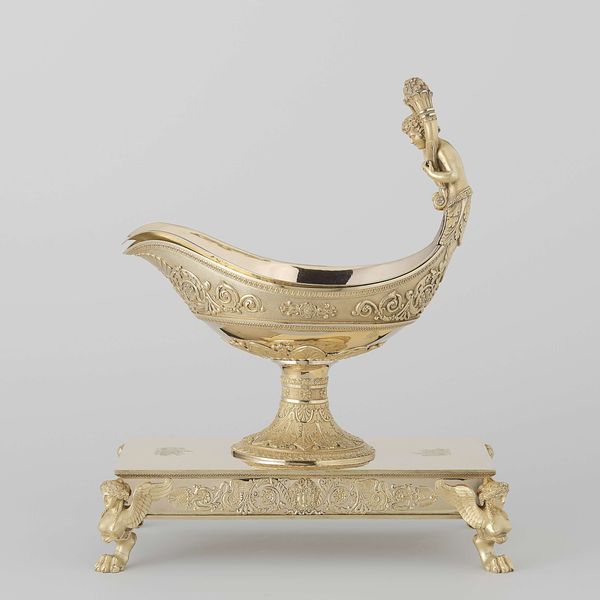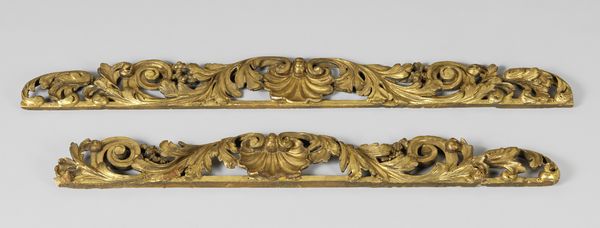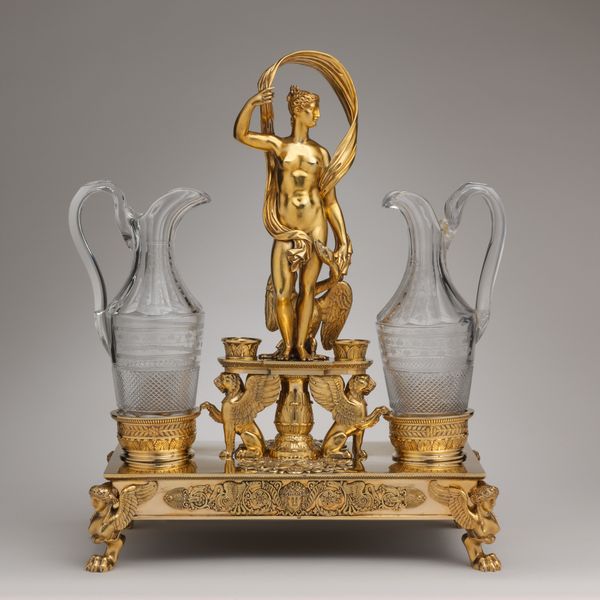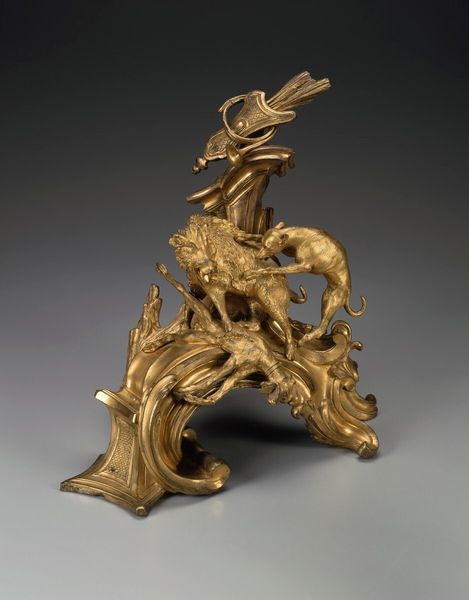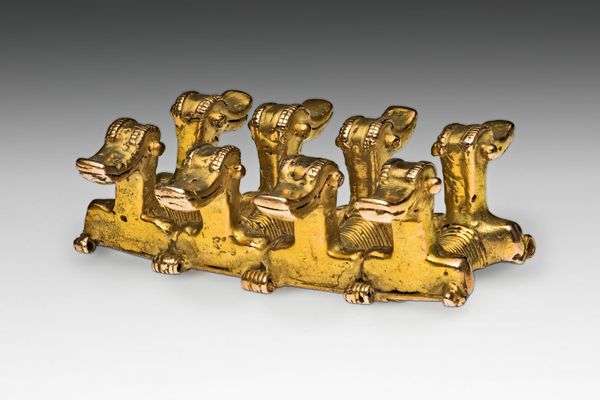
metal, gold, sculpture
#
allegory
#
baroque
#
metal
#
sculpture
#
gold
#
figuration
#
sculpture
#
men
#
musical-instrument
Dimensions: Harpsichord: 14 3/4 in. × 9 ft. 10 in. × 38 in. (37.5 × 299.7 × 96.5 cm) Polyphemus: 50 × 60 × 52 in. (127 × 152.4 × 132.1 cm) Galatea: 35 × 57 × 47 in. (88.9 × 144.8 × 119.4 cm)
Copyright: Public Domain
Curator: Looking at this opulent instrument, dating from between 1665 and 1675, we're observing what is known as the Harpsichord by Michele Todini. You can currently find it here at the Metropolitan Museum of Art. Editor: What first hits me is its incredible theatricality. The whole thing feels like a scene from an opera, all swirling figures and golden light. Almost cartoonish, with such a shiny finish that distracts from the details in a good way. Curator: Absolutely. The Baroque style, you know, loved that sense of drama. This harpsichord is as much a sculpture as it is a musical instrument, adorned with gold and metalwork depicting what seem like figures from mythology. Editor: The human forms really play with your mind. There are mermen supporting what I can only presume to be the keyboard. The instrument appears to hover in a netherworld as if levitating from its place near the rocky ground. There is a playful contrast here in supporting a keyboard with human and amphibian muscular supports and the almost playful cartoon figures perched on nearby dark, ominous mounds. Curator: Right, note how the artist also plays with allegorical elements? It's not just about showing skill, it's about embedding meaning. Consider how music was often used as a metaphor during the Baroque period – for the harmony of the cosmos, or even the passions of the human soul. Editor: I imagine the piece wanting to create an awe effect to the point of sensory overload. Todini's piece creates this artificial paradise, like some aquatic reverie cast entirely in gold. Its details call into question what part of it has to do with making music and what part of it has to do with inspiring its player. The effect is almost claustrophobic in feeling because you feel like you're supposed to study its entire surface at once. Curator: You nailed it; there is the harmony between music and design on display. I hope people get a chance to truly appreciate its grandeur, the ambition behind it is so admirable. Editor: For me, it's this constant sense of playful contradiction, highbrow meets lowbrow. And also this wonderful over-the-top celebration of excess that feels as extravagant today as I'm sure it did back then.
Comments
No comments
Be the first to comment and join the conversation on the ultimate creative platform.
